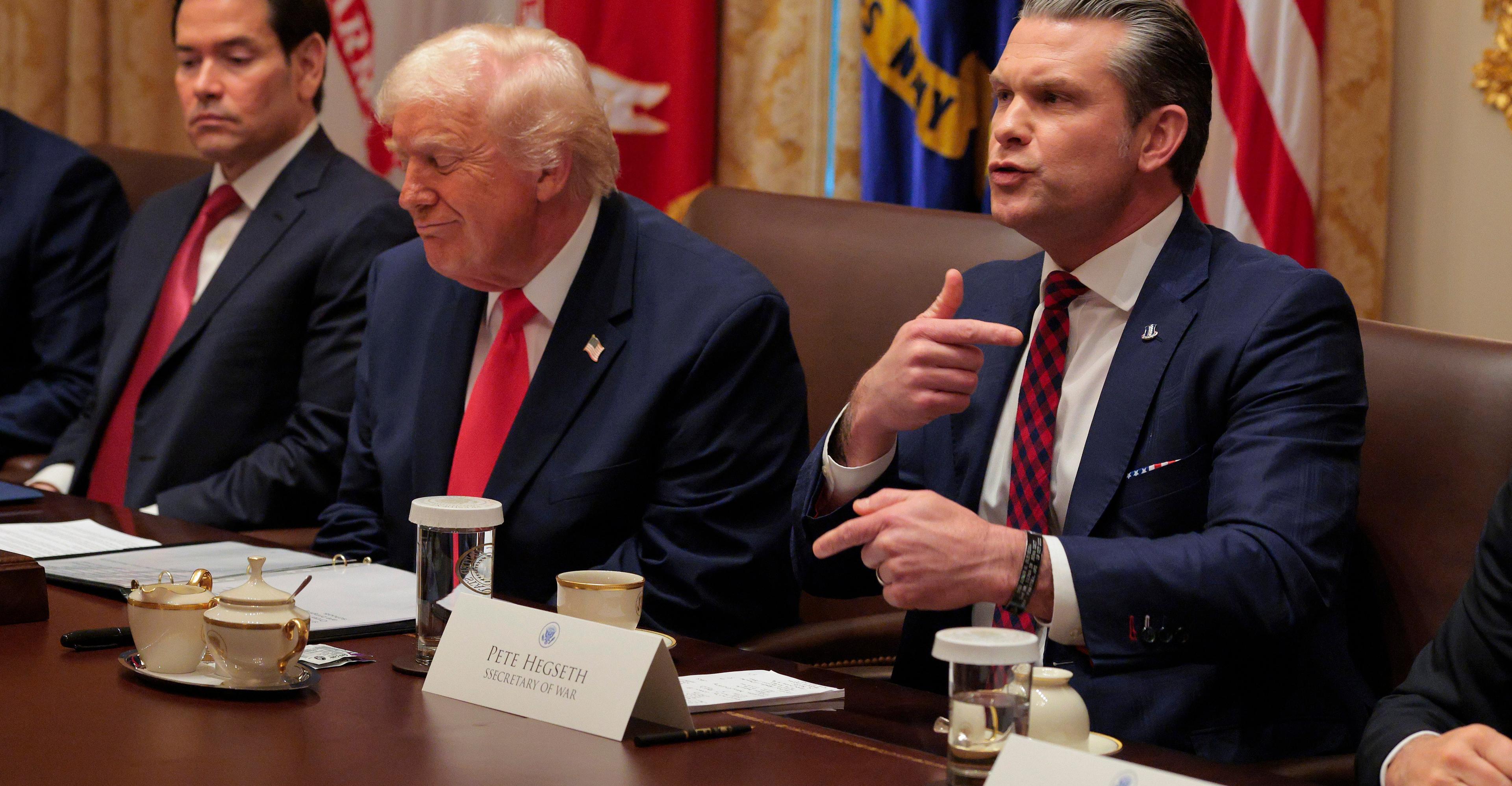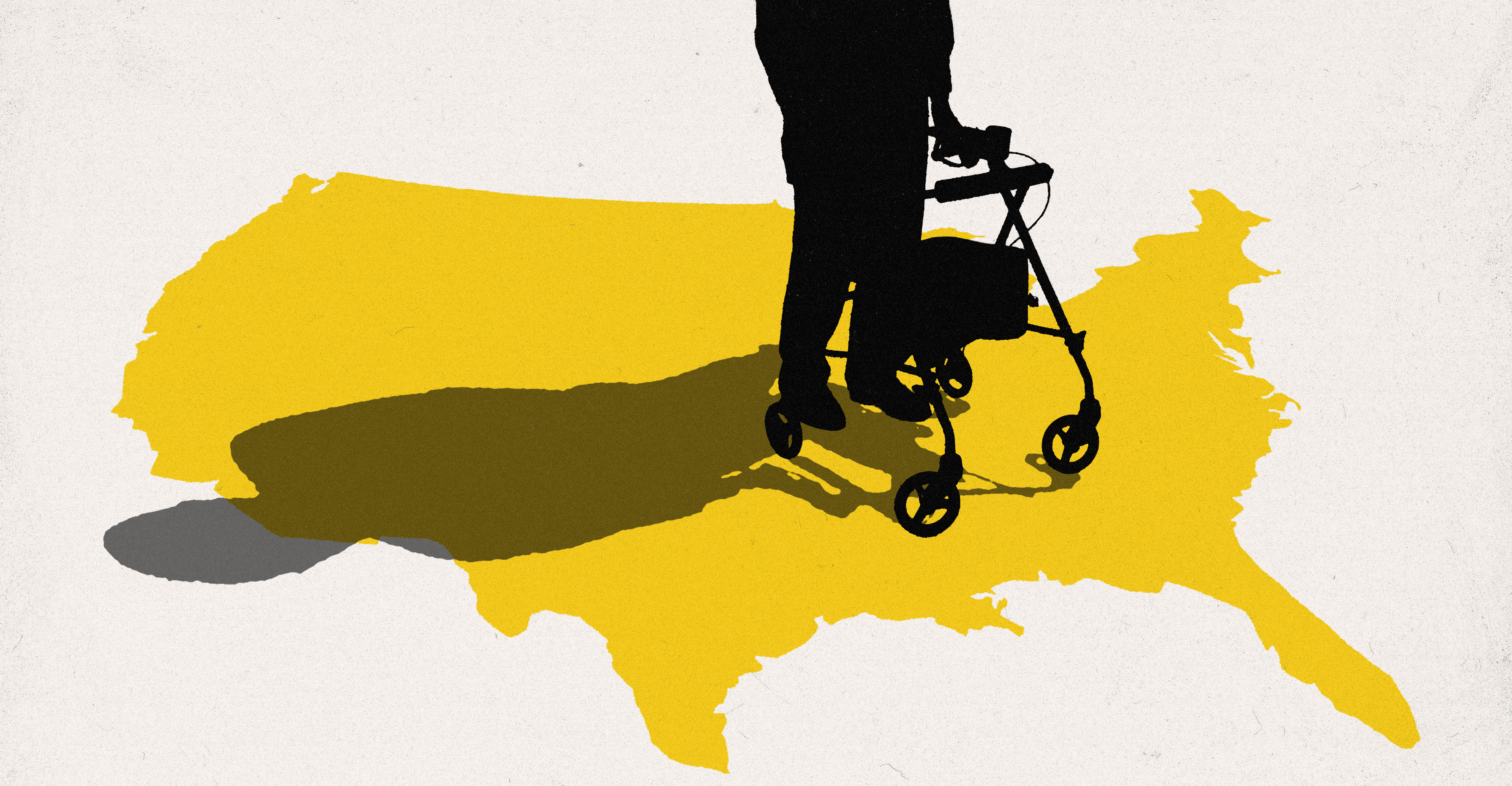A viciously xenophobic demagogue — who fomented an insurrection against the US government less than four years ago — is on track to win the White House this fall. And the only remotely viable alternative to him, for now, is a massively unpopular, geriatric De…

Published ایک سال قبل on جون 30 2024، 12:00 شام
By Web Desk

A viciously xenophobic demagogue — who fomented an insurrection against the US government less than four years ago — is on track to win the White House this fall. And the only remotely viable alternative to him, for now, is a massively unpopular, geriatric Democrat who just advertised his inability to speak in complete sentences on national television. This is the reality that confronts us in the wake of Joe Biden’s catastrophic performance at Thursday night’s presidential debate. A comprehensive account of how we arrived at this grim moment would require a multi-volume history. But one cause of our current predicament is worth highlighting: Democratic presidential candidates repeatedly failed to select running mates with an eye to their party’s long-term best interests. Vice presidents do not always go on to become presidential nominees. But they very often do. In partisan primaries, few résumé items are more advantageous than a tenure as a beloved president’s heir apparent. Given this reality, a presidential nominee should aim to pick a running mate whom they consider highly electable. Unfortunately, the last two Democratic presidents did not prioritize political chops when selecting their veeps. Barack Obama didn’t choose Joe Biden because he thought that the then-Delaware senator would make a great Democratic nominee in 2016. To the contrary, by most accounts, Obama thought that Biden would be a totally nonviable candidate by the time his own hypothetical presidency ended. And he reportedly selected Biden precisely for that reason. According to senior Democrats who spoke with New York magazine’s Gabriel Debenedetti in 2019, Obama had assumed that Biden would be too old to run for president by 2016. And he reasoned that this fact would render Biden an especially loyal second-in-command: Bereft of political aspirations of his own, Biden would have no compunction about putting Obama’s interests and goals above all else. As it happened, Obama misjudged his running mate in more ways than one. In hindsight, it appears likely that Biden would have been a stronger nominee in 2016 than Hillary Clinton — Obama’s hand-picked successor — proved to be. Nevertheless, Obama was certainly correct that — even eight years ago — Biden, then 71, was much older than an ideal presidential candidate. Instead of making the Delaware senator his running-mate, or putting his thumb on the scales for Clinton, Obama should have found a veep who was in his or her political prime and boasted a demonstrable capacity to compete in a swing state. Instead, he put his own campaign and future administration’s interests over the long-term best interests of the Democratic Party, likely damaging his own legacy in the process. Biden’s choice of Kamala Harris in 2020 was even more misguided. When he made that choice in August 2020, there was little basis for believing that Harris was one of the most politically formidable Democrats in the country. Harris had just mounted an exceptionally lackluster bid for the presidency. Then a California senator, Harris had entered the race for the Democratic nomination with strong donor support and an early surge in the polls. Despite these early advantages, Harris failed to maintain — let alone build out — her coalition over the ensuing months, and her campaign collapsed before the primary’s first ballots were cast. Nor was Harris’s electoral track record before 2020 especially encouraging. She had never won an election in a swing state or competitive district. And in her first statewide race in deep blue California in 2010, Harris defeated her Republican rival by less than 1 percentage point. Two years earlier, Barack Obama had won that state by more than 23 points. Given that Biden was 77 in August 2020, the likelihood that his running-mate would one day become his party’s standard-bearer was unusually high. It was entirely plausible that health problems would force him to retire before the end of his first term, let alone his second. And were Harris to become an incumbent president, no other Democrat would stand a chance of defeating her in a contested primary. For these reasons, Biden’s primary consideration in choosing a running-mate should have been his or her electability. Instead, he put enormous weight on demographic considerations. “I think he came to the conclusion that he should pick a Black woman,” former Democratic Senate Majority Leader Harry Reid told the New York Times in the summer of 2020. “They are our most loyal voters and I think that the Black women of America deserved a Black vice-presidential candidate.” Without question, it is desirable for a vice presidential candidate to energize the Democratic Party’s most loyal constituencies. That is one dimension of electability. But it is not obvious that Harris actually possessed that capability; after all, her 2020 campaign resonated so little with Black voters in South Carolina that she was forced to withdraw before that state’s primary. In any case, the ability to appeal to swing voters is much more electorally valuable than a penchant for pleasing loyal Democrats. Turning out a Democratic voter who would otherwise stay home increases your margin by 1 point; flipping a Republican voter into your column increases it by 2. The desire to give historically marginalized groups representation at the apex of American power is a righteous one. Such representation does have the potential to shift cultural perceptions about race and gender in a progressive direction (although, as Obama’s presidency showed, it also has the potential to catalyze a reactionary backlash). But such diffuse cultural shifts are ultimately of less consequence than public policy, above all for the most vulnerable in American society. Working-class Black women have more to lose from a Congress that guts Medicaid and a civil rights division that prioritizes anti-white discrimination than they have to gain from seeing someone of their race and gender squander a national election. In 2020, there were plenty of non-white-male Democrats with a proven record of appealing to swing voters for Biden to choose from. Amy Klobuchar had repeatedly won landslide victories in light blue Minnesota. Tammy Duckworth had unseated a Republican incumbent in a purple Illinois House district before subsequently winning election to the Senate. Michigan Gov. Gretchen Whitmer had demonstrated her appeal to Rust Belt independents. Tammy Baldwin had repeatedly won Senate races in Wisconsin. Instead, Biden opted for a running mate who few in the party considered to be an optimal general election candidate, despite the fact that — were Biden to win — there was a high probability that Harris would be her party’s standard-bearer at some point in the near future. Over the past two years, Harris’s poor poll numbers — and Democratic insiders’ lack of confidence in her political acumen — reduced pressure on Biden to step down, and allow his party to run a less aged and unpopular nominee. Many party leaders seemed to reason that Biden was a safer bet than his vice president. After Thursday night, it looks like this view was mistaken. For all her liabilities, Harris’s approval rating is somewhat better than Biden’s at this point. The vice president has some gifts as an orator and no shortage of vitality. Given the immense difficulty of coordinating behind a non-Biden candidate at this late date, there’s a plausible case that she is now the Democratic Party’s best option. Considering the importance of keeping Trump out of power, however, we deserve a better option. And if Obama and Biden had prioritized their party’s long-term best interests when choosing their running mates, we would likely have one.

ChatGPT can now use Adobe apps to edit your photos and PDFs for free
- 12 hours ago

The “Trump Gold Card,” briefly explained
- 19 hours ago
Cold, partly cloudy weather expected over most parts of country
- 7 hours ago
Pakistan win Under-19 Women T20 series
- 7 hours ago

The Supreme Court sounds surprisingly open to a case against a death sentence
- 10 hours ago
Taylor Swift breaks down in Eras documentary over Southport attack
- 4 hours ago
PM Shehbaz emphasises to resolve disputes peacefully through dialogue, diplomacy
- 7 hours ago

Want a new job? Be (sort of) annoying.
- 19 hours ago

Gold prices jump in Pakistan, global markets
- 7 hours ago
Chris DeMarco excited to take over Liberty when Warriors duties end
- 20 hours ago
Pakistan military court sentences ex-spy chief Faiz Hameed to 14 years in prison
- 8 hours ago
Japan lifts tsunami warning after 6.7-magnitude earthquake
- 7 hours ago
You May Like
Trending









